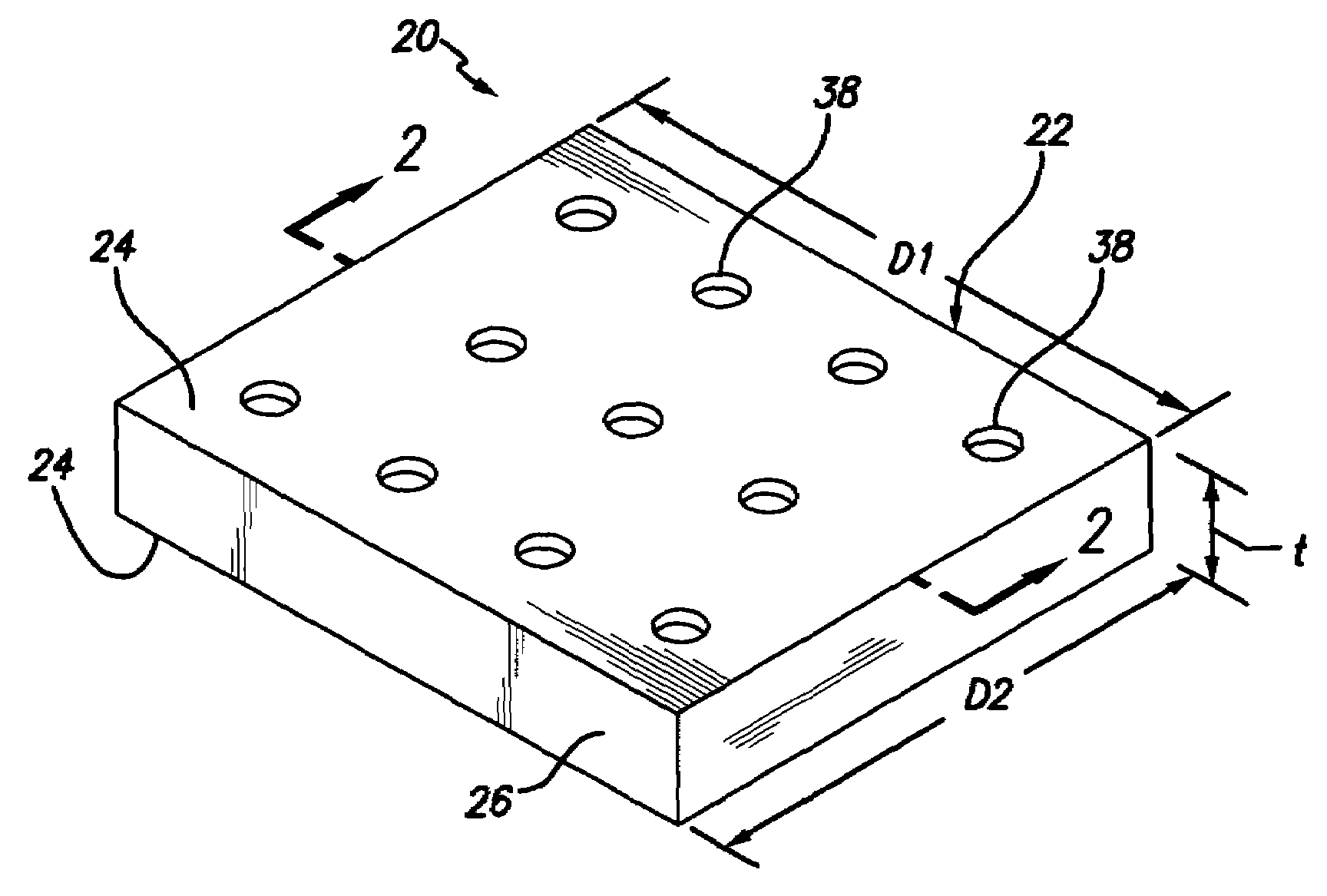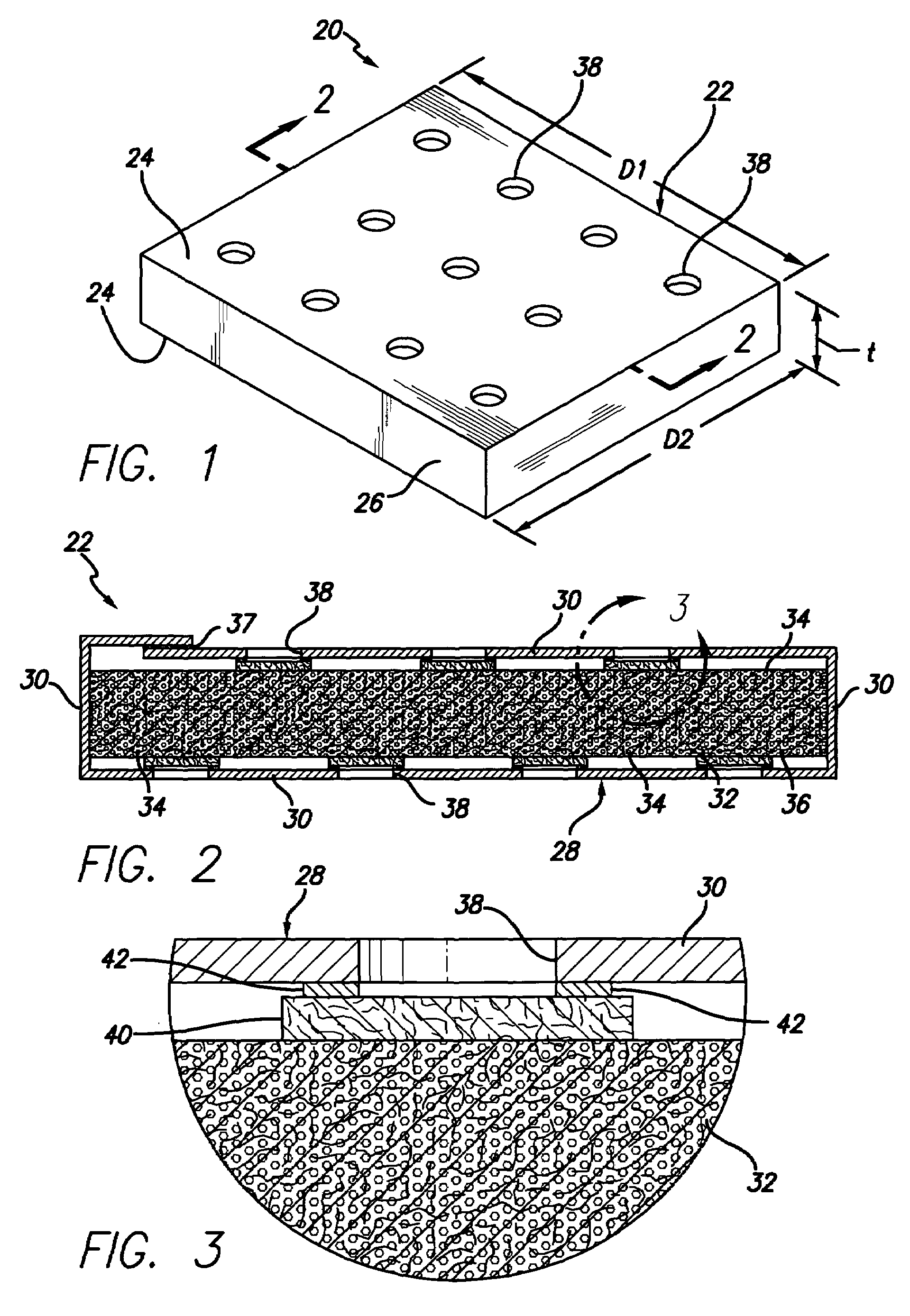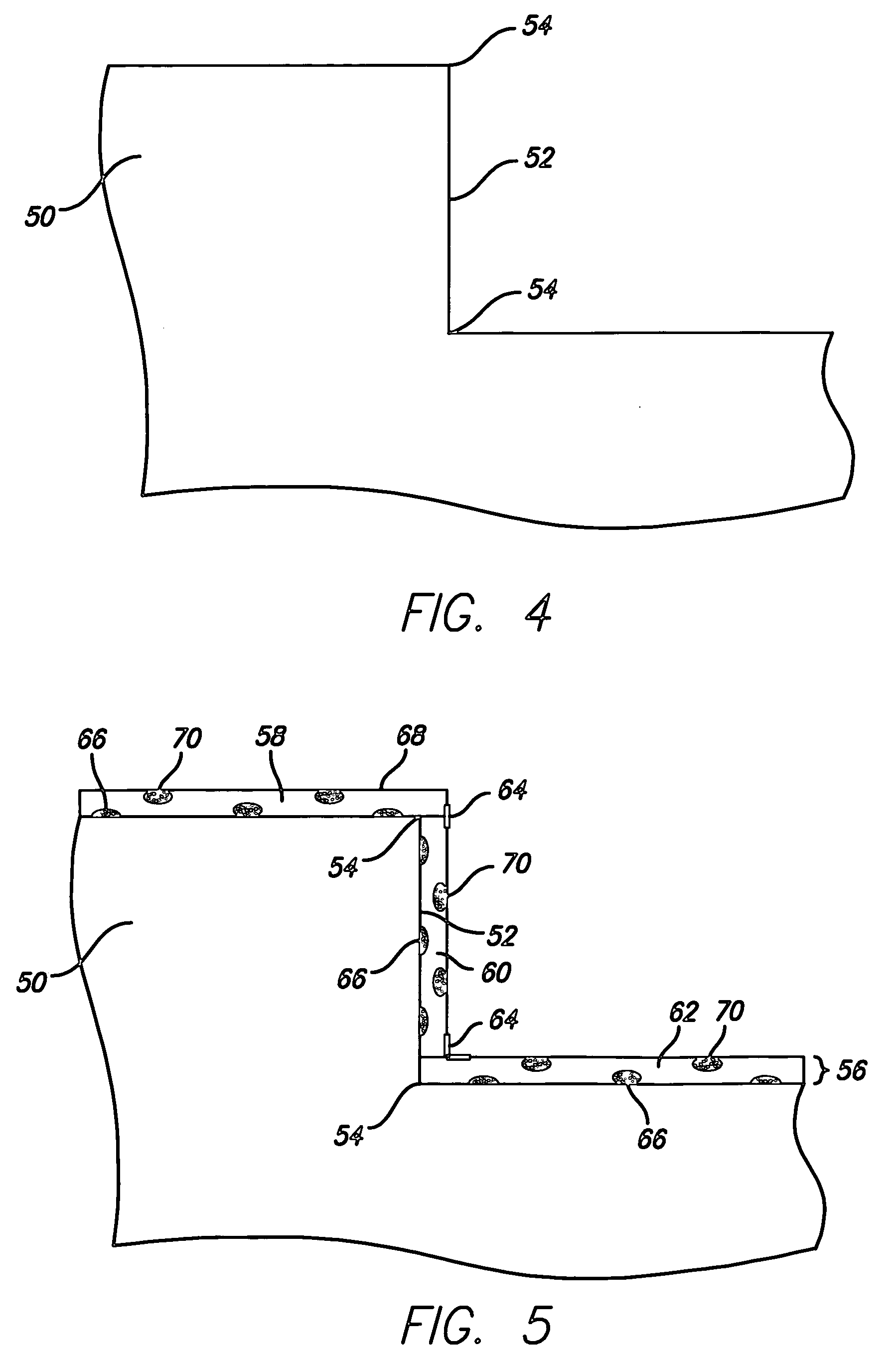Encapsulated and vented particulate thermal insulation
- Summary
- Abstract
- Description
- Claims
- Application Information
AI Technical Summary
Benefits of technology
Problems solved by technology
Method used
Image
Examples
Embodiment Construction
[0027]FIG. 1 depicts in perspective view an article 20 that includes a piece of encapsulated insulation 22. The piece of encapsulated insulation 22 preferably, but not necessarily, has a blanket shape with two substantially equal opposing faces 24, and an edge 26 separating the opposing faces 24. A surface area of the edge 26 is smaller than a surface area of either of the opposing faces. The edge separates the opposing faces 24 by a distance of from 0.08 to 0.75 inches, most preferably 0.25 inches, which defines the thickness of the blanket-shaped piece of encapsulated insulation 22. Typically, in such a blanket the transverse dimensions D1 and D2 of the faces 24 are much larger than the separation dimension or thickness t (i.e., at least 10 times, sometimes at least 20 times, and often 50 or more times larger than t) of the piece of encapsulated insulation 22. In another but substantially equivalent form of the piece of encapsulated insulation 22, the periphery of the opposing fac...
PUM
| Property | Measurement | Unit |
|---|---|---|
| Length | aaaaa | aaaaa |
| Length | aaaaa | aaaaa |
| Thickness | aaaaa | aaaaa |
Abstract
Description
Claims
Application Information
 Login to View More
Login to View More - R&D
- Intellectual Property
- Life Sciences
- Materials
- Tech Scout
- Unparalleled Data Quality
- Higher Quality Content
- 60% Fewer Hallucinations
Browse by: Latest US Patents, China's latest patents, Technical Efficacy Thesaurus, Application Domain, Technology Topic, Popular Technical Reports.
© 2025 PatSnap. All rights reserved.Legal|Privacy policy|Modern Slavery Act Transparency Statement|Sitemap|About US| Contact US: help@patsnap.com



